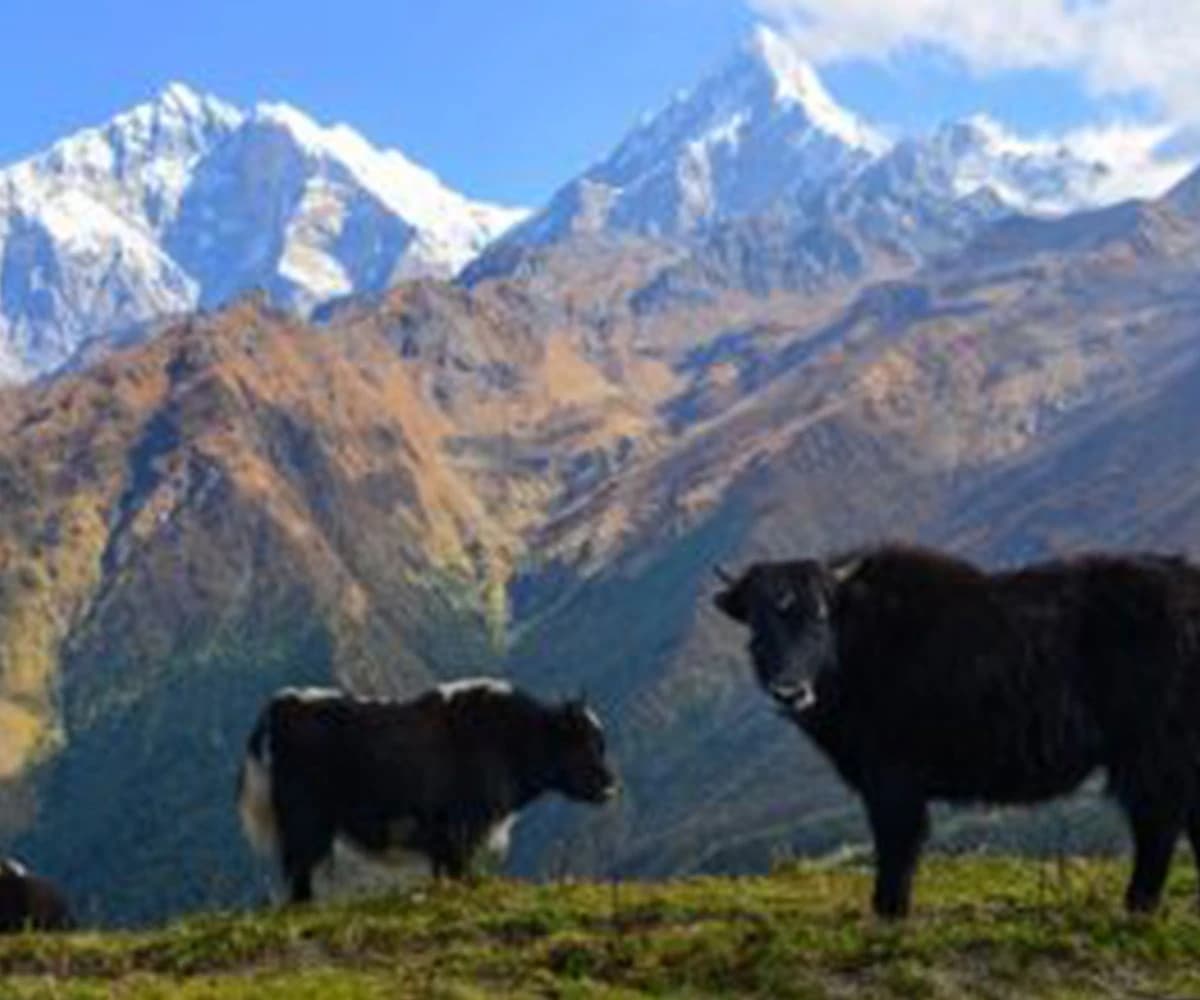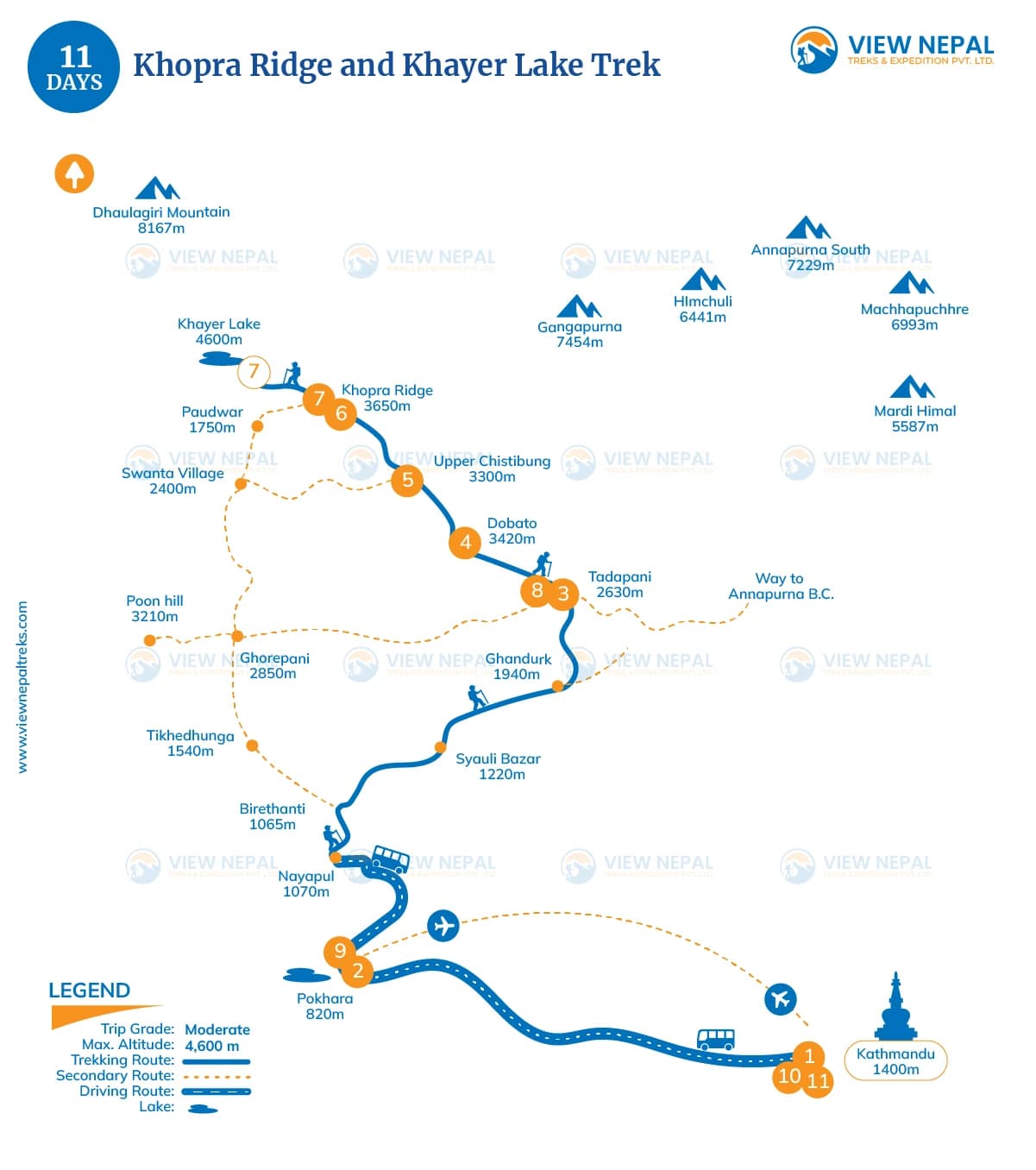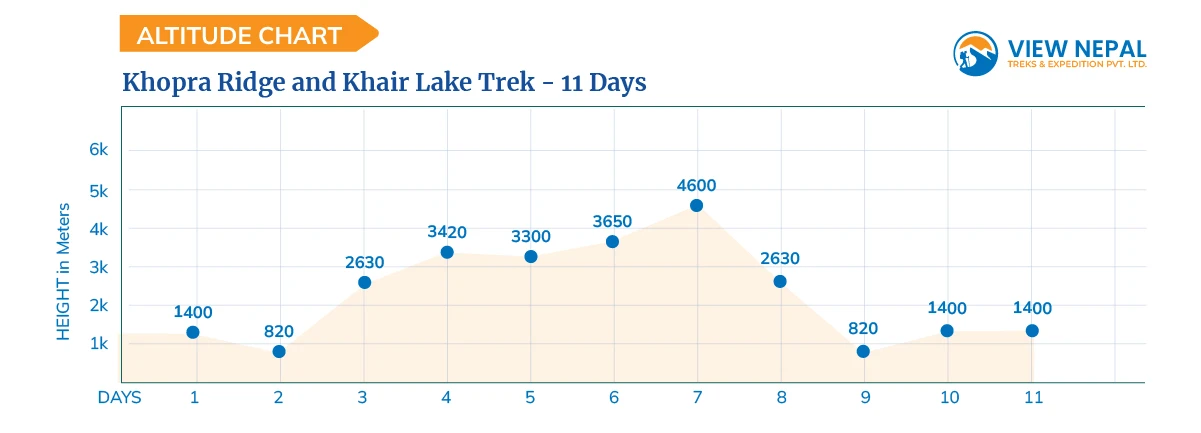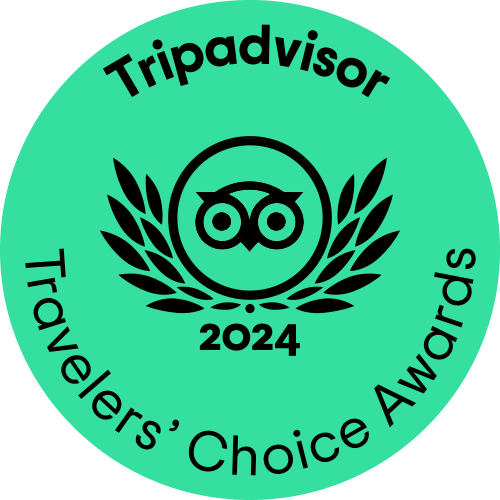Trek Overview
The Khopra Ridge and Khair Lake trek is a relatively lesser-known but stunning trekking route in the Annapurna region of Nepal. It offers a diverse range of landscapes, from lush forests to high alpine meadows, and provides breathtaking views of the Annapurna and Dhaulagiri Mountain ranges. Here's a detailed overview of the trek:
The Khopra Ridge and Khair Lake trek typically take around 7 to 11 days to complete, depending on the specific itinerary and starting/ending points. The trek often begins with a visit to Ghorepani and a hike up to Poon Hill, renowned for its spectacular sunrise views over the Annapurna and Dhaulagiri Mountain ranges. From Ghorepani, the trek leads to the picturesque village of Swanta, where trekkers can experience the local Gurung culture and hospitality.
Trekking further, you'll reach Tadapani, another charming village offering panoramic mountain views and opportunities for cultural immersion. Continuing along the trail, you'll ascend to Dobato, where a short hike to Muldai Viewpoint rewards you with stunning vistas of the surrounding peaks, including Annapurna South and Machhapuchhre (Fishtail).
The highlight of the trek is reaching Khopra Ridge, a pristine alpine meadow with breathtaking views of Dhaulagiri, Annapurna South, Nilgiri, and other peaks. Trekkers can explore the ridge, visit the nearby temple, and enjoy the tranquility of the surroundings. A side trip from Khopra Ridge takes you to Khair Lake, a sacred high-altitude lake nestled amidst the Himalayas. The hike to Khair Lake offers stunning views and a sense of serenity amidst the pristine mountain environment.
Throughout the trek, you'll traverse diverse landscapes, including dense rhododendron forests, terraced fields, and high alpine pastures dotted with yak herds. Along the way, you'll encounter traditional villages inhabited by Gurung and Magar communities, providing opportunities to experience their unique culture, architecture, and way of life.
The Khopra Ridge and Khair Lake trek is considered moderately challenging. While the trails are well-defined and don't involve technical climbing, there are some steep ascents and descents, as well as high-altitude sections that require proper acclimatization.
Accommodation along the trekking route is available in teahouses or guesthouses, providing basic but comfortable lodging with shared facilities. Meals are typically provided at the teahouses, offering a variety of Nepali and international dishes to fuel your trekking adventure.
Overall, the Khopra Ridge and Khair Lake trek offer a unique blend of natural beauty, cultural experiences, and panoramic mountain views, making it a rewarding journey for trekkers seeking an off-the-beaten-path adventure in the Annapurna region of Nepal.
What can you Expect from Khopra Ridge and Khair Lake Trek?
Trekking in the Khopra Ridge and Khair Lake area offers a unique and rewarding experience in the heart of the Annapurna region of Nepal. Here's what you can expect:
The trek provides breathtaking views of some of the world's highest peaks, including Annapurna South, Dhaulagiri, Nilgiri, and Machhapuchhre (Fishtail). Sunrise and sunset views from Khopra Ridge are particularly stunning. While popular, the Khopra Ridge and Khair Lake trek are less crowded compared to some of the more famous routes like the Annapurna Circuit or Everest Base Camp. This allows for a more peaceful and intimate experience with nature.
The trek takes you through a diverse range of landscapes, from lush forests and terraced farmland to alpine meadows and rugged mountain terrain. You'll encounter rhododendron forests, charming villages, and pristine glacial lakes along the way. You'll have the opportunity to interact with the local Gurung and Magar communities, experiencing their unique culture, traditions, and hospitality. Overnight stays in teahouses and homestays provide insight into the rural way of life in the Himalayas.
The trek includes a visit to Khair Lake, also known as Khayar Barahi Lake, a sacred pilgrimage site for Hindus. The tranquil lake is surrounded by towering peaks and offers a serene setting for reflection and relaxation. Keep an eye out for diverse wildlife along the trail, including Himalayan Thar, deer, langur monkeys, and a variety of bird species. The region is also home to elusive snow leopards and red pandas, though sightings are rare.
The trek involves moderate to challenging terrain, with steep ascents and descents at times. However, the stunning scenery and sense of accomplishment upon reaching Khopra Ridge and Khair Lake make it all worthwhile. Overall, the Khopra Ridge and Khair Lake trek offer a perfect blend of natural beauty, cultural immersion, and adventure, making it a memorable journey for trekkers seeking a unique Himalayan experience.
Highlights
- A less crowded vantage point offering unobstructed, stunning views of the Annapurna and Dhaulagiri ranges.
- Opportunity to experience the sunrise and sunset over the Himalayas from Khopra Ridge.
- A sacred alpine lake situated at an altitude of 4,600 meters (15,091 feet).
- The lake is a pilgrimage site for both Hindus and Buddhists, adding a spiritual element to the trek.
- Traditional Gurung and Magar villages, experiencing the local culture, hospitality, and traditional lifestyle.
- Opportunity to visit local monasteries and temples.
- Walk through diverse landscapes, including rhododendron forests, alpine meadows, and terraced fields.
- Chance to spot various wildlife, including the colorful Danphe (Himalayan Monal), Nepal's national bird.
- Stay in lodges, contributing directly to local development and sustainability efforts.
- Enjoy warm hospitality and locally prepared meals
- less crowded trekking route, providing a sense of tranquility and exclusivity
- Relax in the natural hot springs at Tatopani, soothing your muscles after days of trekking.
- Visit charming villages like Ghandruk, Tadapani, and Swanta, each offering unique cultural and scenic experiences.
- Multiple spots along the trek, including Poon Hill, offer incredible sunrise and sunset views over the Himalayas.




